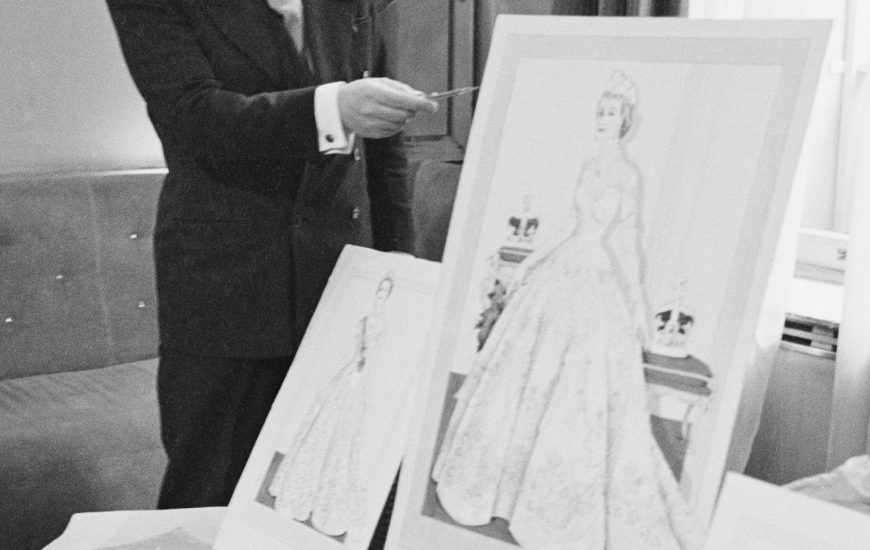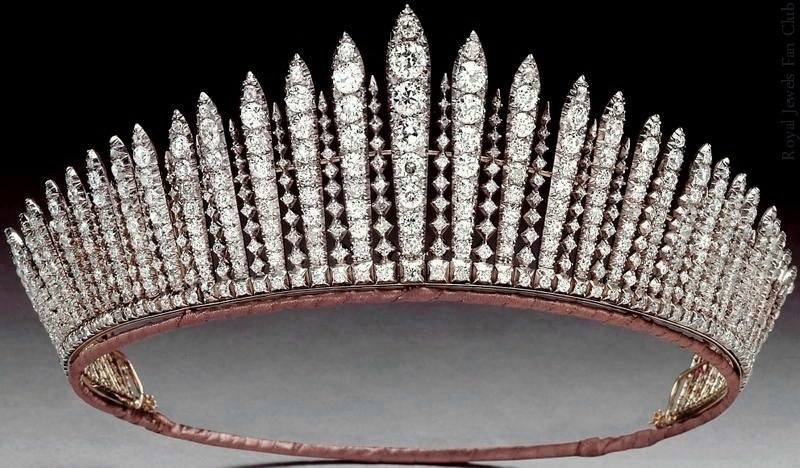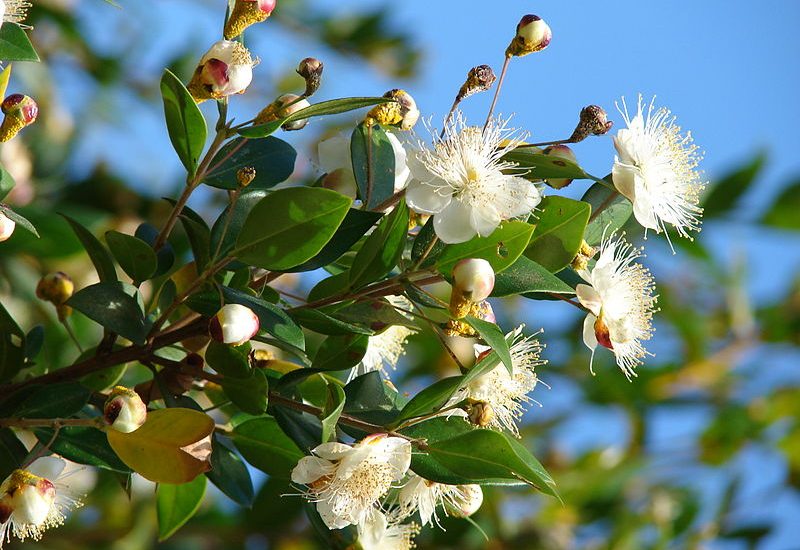Princess Elizabeth, the daughter of King George VI and Queen Consort Elizabeth Bowes-Lyon, was born in 1926. On a visit to the Royal Naval College, at the age of 13, she met Philip Mountbatten, Prince of Greece and Denmark. From that moment, they started to exchange letters, and from there, eventually, their friendship blossomed into romance. The engagement took place in July 1947 and the wedding in November of the same year, at Westminster Abbey, London. For the nation, fatigued by the post-war period, the marriage was a sign of relief and hope.

The bride chose the designer Norman Hartnell to make her wedding dress. At that time, Britain was still under rationing restrictions, so the princess and her mother collected coupons to pay for the dress. Hartnell designed the dress inspired by the painting La Primavera by Botticelli, 1482. The chosen fabric was silk satin in an ivory colour. The square-shouldered design had a sweetheart neckline, embroidered with alternating roses, lilac, and ears of corn that extended through the front centre of the bodice. The body of the dress was fitted, with a low pointed waist, embroidered with jasmine flowers in crystal. The sleeves were long and narrow, with embroidered cuffs. The skirt had a bias cut, a lower waist with a deep circular tail, embroidered from the waist to the hem with spring flower motifs. The veil, attached to the shoulders, was made of a 4 metre length of silk tulle, embroidered with floral motifs in pearls, crystals, and appliqués of duchesse satin. The dress fastened at the back with buttons. More than 10,000 pearls, crystals, and silver threads were used to decorate the dress.

To accessorise the dress, Elizabeth wore sandals made by Edward Rayne. The satin-heeled sandals had silver buckles adorned with pearls. Her engagement ring featured diamonds that had belonged to a tiara from Philip’s mother. She wore two pearl necklaces that had been inherited from Queen Victoria, a wedding gift given by her father, King George VI. The tiara was from the crown collection. The bouquet was made of white orchids with a branch of myrtle.


The dress represented desire for a fresh start after the war. Many brides saw the brightness of the dress as a symbol of hope for the dreams of British women still suffering the effects of the post-war period.

Marilia
04/20/2021Lovely
Jeane Martins
04/20/2021Thanks